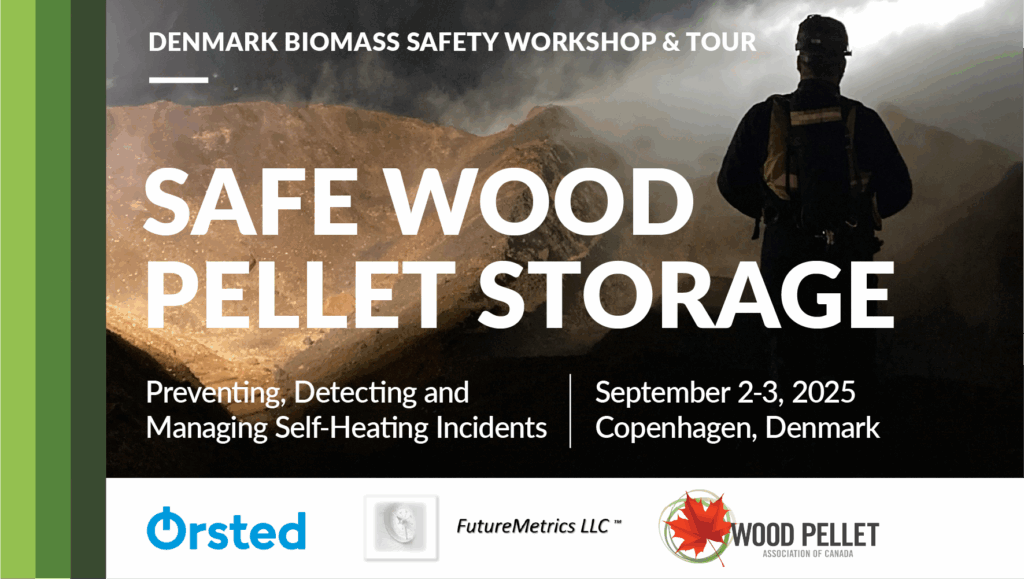 The Wood Pellet Association of Canada, in collaboration with FutureMetrics and Ørsted, is hosting a half-day tour and a one-day workshop, Safe Wood Pellet Storage: Preventing, Detecting, and Managing Self-Heating Incidents, in Copenhagen, Denmark, September 2-3, 2025. On day one, Ørsted will take attendees on a tour of one of their Bioenergy Carbon Capture and Storage (BECCS) projects. This will be followed by a full day workshop and Ørsted-hosted Dinner. This workshop will provide insights into major incidents, technical causes, risk mitigation strategies, and emergency response procedures, helping professionals enhance safety standards across storage facilities. Don’t miss this opportunity to engage with leading specialists and drive industry-wide improvements forward.
The Wood Pellet Association of Canada, in collaboration with FutureMetrics and Ørsted, is hosting a half-day tour and a one-day workshop, Safe Wood Pellet Storage: Preventing, Detecting, and Managing Self-Heating Incidents, in Copenhagen, Denmark, September 2-3, 2025. On day one, Ørsted will take attendees on a tour of one of their Bioenergy Carbon Capture and Storage (BECCS) projects. This will be followed by a full day workshop and Ørsted-hosted Dinner. This workshop will provide insights into major incidents, technical causes, risk mitigation strategies, and emergency response procedures, helping professionals enhance safety standards across storage facilities. Don’t miss this opportunity to engage with leading specialists and drive industry-wide improvements forward.


 The Wood Pellet Association of Canada will host the largest gathering of the Canadian wood pellet industry. Biomass and wood pellets play a key role in ensuring Canada has renewable and responsible energy. Join us in Halifax, Nova Scotia, September 23-24, 2025.
The Wood Pellet Association of Canada will host the largest gathering of the Canadian wood pellet industry. Biomass and wood pellets play a key role in ensuring Canada has renewable and responsible energy. Join us in Halifax, Nova Scotia, September 23-24, 2025. In 2023, the Canada wildfires that incinerated more than 17 million hectares of boreal forest were so hot they … smoldered underground all winter. That heat created vast columns of rising air, carrying dust, volatile organic compounds, and huge quantities of a simple particle with the potential to exacerbate climate change: black carbon. Commonly known as soot, black carbon is a type of pollution formed by the incomplete combustion of fossil fuels or biomass such as trees. It’s a risk to human health, having been linked to respiratory and cardiovascular diseases. It’s also a potent short-term warming agent. Black carbon absorbs copious heat from the sun and, when it coats a layer of ice or snow, reduces its ability to reflect solar energy back into space. …The research on black carbon needs to be updated as more becomes known about the aerosol, and that makes tracking wildfire smoke even more important.
In 2023, the Canada wildfires that incinerated more than 17 million hectares of boreal forest were so hot they … smoldered underground all winter. That heat created vast columns of rising air, carrying dust, volatile organic compounds, and huge quantities of a simple particle with the potential to exacerbate climate change: black carbon. Commonly known as soot, black carbon is a type of pollution formed by the incomplete combustion of fossil fuels or biomass such as trees. It’s a risk to human health, having been linked to respiratory and cardiovascular diseases. It’s also a potent short-term warming agent. Black carbon absorbs copious heat from the sun and, when it coats a layer of ice or snow, reduces its ability to reflect solar energy back into space. …The research on black carbon needs to be updated as more becomes known about the aerosol, and that makes tracking wildfire smoke even more important. 


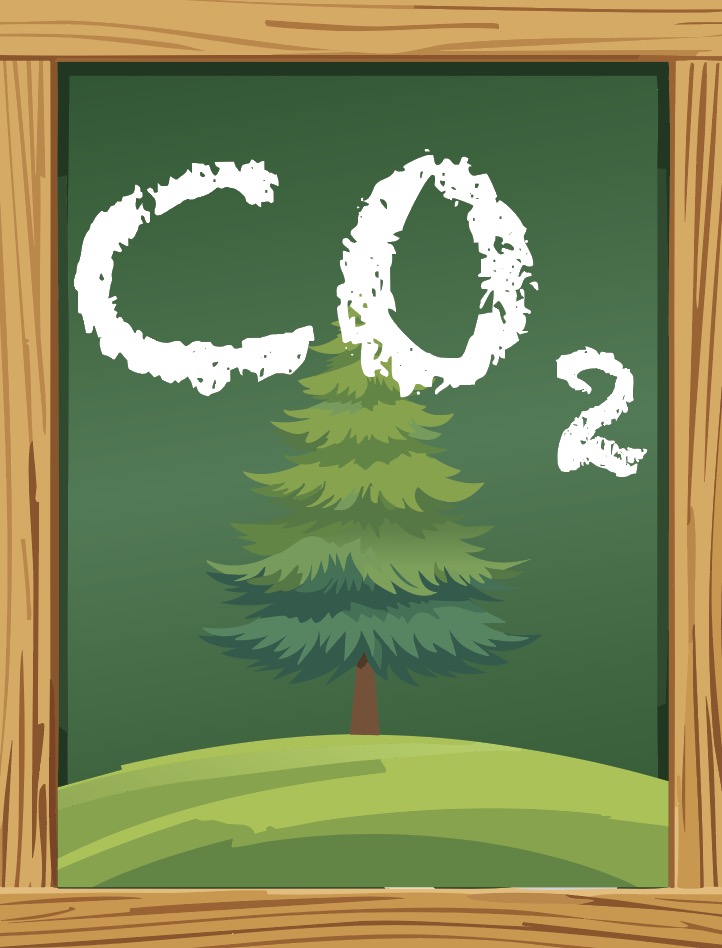 …The Tyee looked at three critical and vastly different means to store carbon in the West, examining how these ecosystems capture carbon, the restoration work they require and why Canada should take them seriously as solutions. …Peatlands are a type of wetland found all over Canada. In the West, they are found in northern B.C. and Alberta. …However, they come with a catch; as much as they absorb carbon, they also emit methane. …Kelp is one of the newest potentials for natural climate solutions and carbon sequestration in Canada. …It is hard for researchers to fully evaluate how much kelp carbon is sequestered in the deep oceans in the long term. …Trees are one of the world’s largest carbon sinks. Like peat, trees sequester carbon through photosynthesis. As trees grow, they take in carbon from the air around them and store it in their wood, soil and plant matter
…The Tyee looked at three critical and vastly different means to store carbon in the West, examining how these ecosystems capture carbon, the restoration work they require and why Canada should take them seriously as solutions. …Peatlands are a type of wetland found all over Canada. In the West, they are found in northern B.C. and Alberta. …However, they come with a catch; as much as they absorb carbon, they also emit methane. …Kelp is one of the newest potentials for natural climate solutions and carbon sequestration in Canada. …It is hard for researchers to fully evaluate how much kelp carbon is sequestered in the deep oceans in the long term. …Trees are one of the world’s largest carbon sinks. Like peat, trees sequester carbon through photosynthesis. As trees grow, they take in carbon from the air around them and store it in their wood, soil and plant matter …In the aftermath of the earthquake and tsunami, Japan shut down not just Fukushima but all of its nuclear plants, a move that resulted in the loss of a third of its electrical power. …Japan faced a daunting energy crisis that it addressed… with conventional fuels such as natural gas and “bioproducts” including wood pellets derived from the logging of BC’s Interior forests. …Last year, roughly two million tonnes of those pellets arrived Japanese ports from BC, linked to a dozen mills in the province that make wood pellets derived from trees logged in the province’s rapidly dwindling primary forests — natural forests never previously subject to industrial logging. …Which means that in the name of creating allegedly clean energy, forests are being razed just to burn the wood. …The strain on the province’s stressed forests is [also] coming from other bioenergy producers, including those who want to use wood to make jet fuel.
…In the aftermath of the earthquake and tsunami, Japan shut down not just Fukushima but all of its nuclear plants, a move that resulted in the loss of a third of its electrical power. …Japan faced a daunting energy crisis that it addressed… with conventional fuels such as natural gas and “bioproducts” including wood pellets derived from the logging of BC’s Interior forests. …Last year, roughly two million tonnes of those pellets arrived Japanese ports from BC, linked to a dozen mills in the province that make wood pellets derived from trees logged in the province’s rapidly dwindling primary forests — natural forests never previously subject to industrial logging. …Which means that in the name of creating allegedly clean energy, forests are being razed just to burn the wood. …The strain on the province’s stressed forests is [also] coming from other bioenergy producers, including those who want to use wood to make jet fuel.

 New Brunswick’s biggest industrial carbon emitters pumped out lower amounts of greenhouse gases in 2023, but the reductions were not enough to keep pace with tightening emissions standards. The gap between the total emissions by the province’s 15 biggest industrial polluters and their regulated emissions limits grew larger, according to numbers from the provincial government. That left them paying more under the province’s credit-trading carbon pricing system. Even so, that system is gaining traction, with more of those credits changing hands. …New Brunswick’s industrial carbon price is based on a credit trading system, a financial incentive for the 15 largest industrial emitters to stay below their emissions standards. If they do, they earn what are called performance credits they can sell for a profit. Plants that go above their standards must buy credits, adding to their cost. …The 15 big emitters collectively bought $21.1 million worth of fund credits in 2023, up from $12.6 million in 2022.
New Brunswick’s biggest industrial carbon emitters pumped out lower amounts of greenhouse gases in 2023, but the reductions were not enough to keep pace with tightening emissions standards. The gap between the total emissions by the province’s 15 biggest industrial polluters and their regulated emissions limits grew larger, according to numbers from the provincial government. That left them paying more under the province’s credit-trading carbon pricing system. Even so, that system is gaining traction, with more of those credits changing hands. …New Brunswick’s industrial carbon price is based on a credit trading system, a financial incentive for the 15 largest industrial emitters to stay below their emissions standards. If they do, they earn what are called performance credits they can sell for a profit. Plants that go above their standards must buy credits, adding to their cost. …The 15 big emitters collectively bought $21.1 million worth of fund credits in 2023, up from $12.6 million in 2022.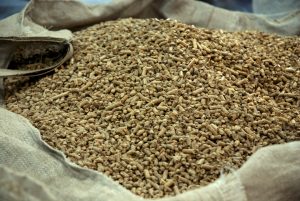 NB Power’s estimated $300-million plan to convert its biggest plant in northern New Brunswick from burning coal to wood pellets would be environmentally damaging and waste a lot of energy, warns a new report. The Conservation Council of New Brunswick, an environmental organization looked at the plan. …They came up with findings that are at odds with NB Power’s rosy view. Running the plant full time on wood pellets, the critics said, would need more offcuts, forcing NB Power to import fuel from Europe. Furthermore, they warn that sourcing as much wood as possible locally would hurt the forest ecology. And lastly, they argue that burning pellets to create electricity is hugely inefficient and would drive up greenhouse gas emissions. …Energy Minister René Legacy told Brunswick News his department would take a close look at the report. But he alluded to the more than 100 jobs NB Power has created.
NB Power’s estimated $300-million plan to convert its biggest plant in northern New Brunswick from burning coal to wood pellets would be environmentally damaging and waste a lot of energy, warns a new report. The Conservation Council of New Brunswick, an environmental organization looked at the plan. …They came up with findings that are at odds with NB Power’s rosy view. Running the plant full time on wood pellets, the critics said, would need more offcuts, forcing NB Power to import fuel from Europe. Furthermore, they warn that sourcing as much wood as possible locally would hurt the forest ecology. And lastly, they argue that burning pellets to create electricity is hugely inefficient and would drive up greenhouse gas emissions. …Energy Minister René Legacy told Brunswick News his department would take a close look at the report. But he alluded to the more than 100 jobs NB Power has created. Five Eastern Ontario companies – three of them in Renfrew-Nipissing-Pembroke – will receive just over $9.1 in government funding under the Forest Biomass Program to create new products and expand markets for existing products produced from low quality forest products. The announcement was made Monday morning by MPP Kevin Holland, the Associate Minister of Forestry and Forest Products at one of two Killaloe Wood Products sites in Bonnechere Valley Township, south of Eganville, where landscaping mulch and other biomass products are processed… “These investments support good paying jobs, drive local growth and encourage innovation,” he said. “But today isn’t just about numbers on a page. Behind every dollar are businesses right here in Eganville and in Whitney that form the backbone of our local economy. The forestry sector is the cornerstone of the economic ecosystem that supports every corner of the riding.”
Five Eastern Ontario companies – three of them in Renfrew-Nipissing-Pembroke – will receive just over $9.1 in government funding under the Forest Biomass Program to create new products and expand markets for existing products produced from low quality forest products. The announcement was made Monday morning by MPP Kevin Holland, the Associate Minister of Forestry and Forest Products at one of two Killaloe Wood Products sites in Bonnechere Valley Township, south of Eganville, where landscaping mulch and other biomass products are processed… “These investments support good paying jobs, drive local growth and encourage innovation,” he said. “But today isn’t just about numbers on a page. Behind every dollar are businesses right here in Eganville and in Whitney that form the backbone of our local economy. The forestry sector is the cornerstone of the economic ecosystem that supports every corner of the riding.”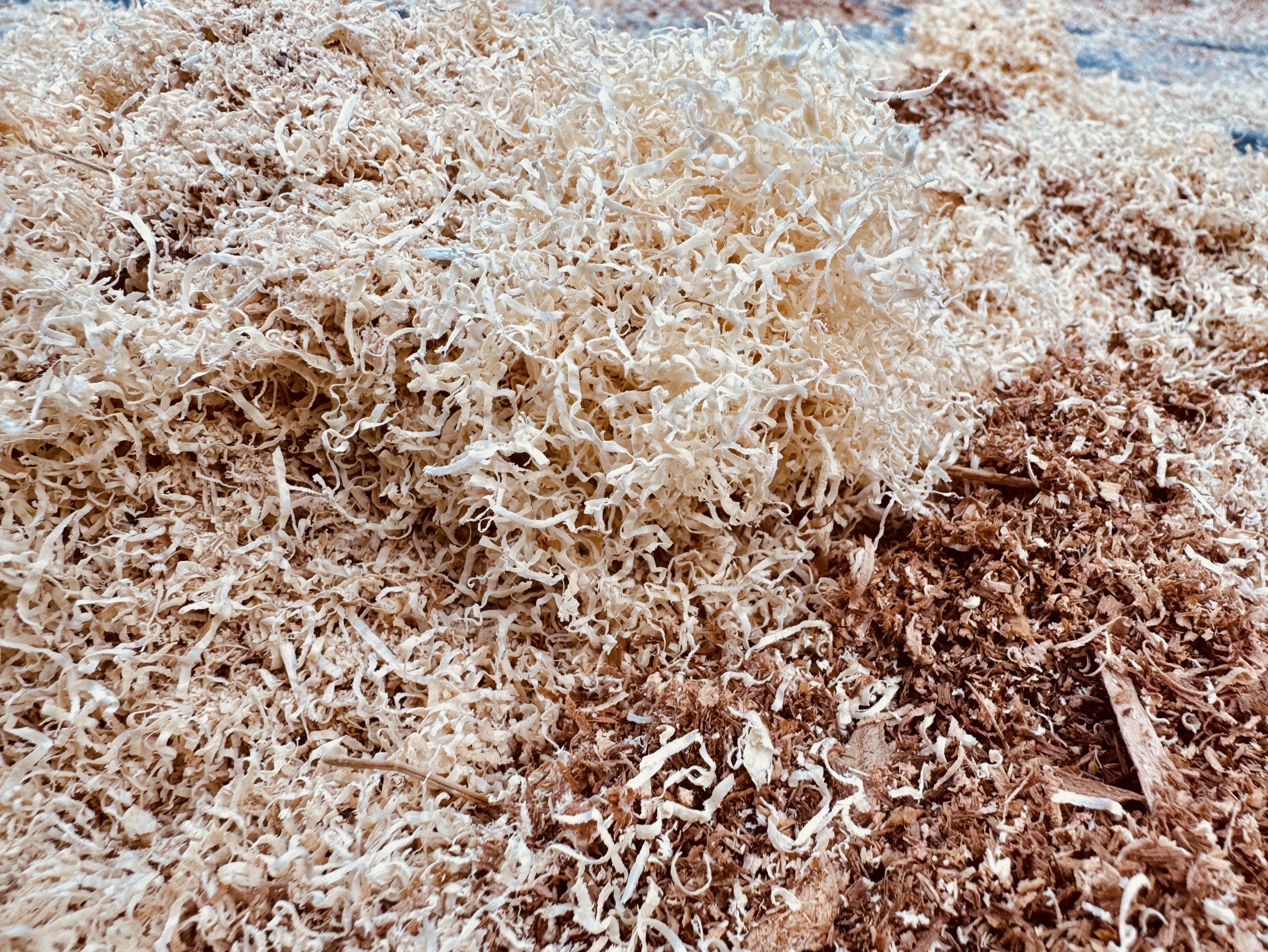 EGANVILLE, Ontario — The Government of Ontario is protecting workers and jobs in the forest sector by investing over $9.1 million in five research, innovation and modernization projects in Eastern Ontario. The investments from the Forest Biomass Program will help boost Ontario’s forest sector’s competitive advantage by creating new jobs, increasing productivity and opening up opportunities for revenue streams in new markets. …The government’s investment is supporting projects related to underused wood and mill by-products, known as forest biomass. …These projects will help create good-paying local jobs while supporting the delivery of high-quality, made-in-Ontario products to market at a lower cost. In addition, they will strengthen Eastern Ontario’s economy by creating added demand for the harvesting, hauling and trucking industries, and develop new opportunities for Indigenous communities to participate in the growing forestry industry.
EGANVILLE, Ontario — The Government of Ontario is protecting workers and jobs in the forest sector by investing over $9.1 million in five research, innovation and modernization projects in Eastern Ontario. The investments from the Forest Biomass Program will help boost Ontario’s forest sector’s competitive advantage by creating new jobs, increasing productivity and opening up opportunities for revenue streams in new markets. …The government’s investment is supporting projects related to underused wood and mill by-products, known as forest biomass. …These projects will help create good-paying local jobs while supporting the delivery of high-quality, made-in-Ontario products to market at a lower cost. In addition, they will strengthen Eastern Ontario’s economy by creating added demand for the harvesting, hauling and trucking industries, and develop new opportunities for Indigenous communities to participate in the growing forestry industry. The megabill President Trump signed into law this month is expected to make a major dent in the U.S.’s climate progress, adding significantly more planet-warming emissions to the atmosphere. Models of the legislation that have emerged since its passage earlier this month show U.S. emissions will rise as a result of its implementation. One from climate think tank C2ES found U.S. emissions will be 8 percent more than they would have been otherwise as a result of the package. “An 8% increase in our emissions is … still a massive amount of emissions,” said Brad Townsend, the group’s vice president for policy and outreach. Taking into account all of the efforts to reduce U.S. emissions over the last 20 years, Townsend said, the bill represents “rolling back a third of that progress with a stroke of a pen.” “From an emissions perspective, this bill is a disaster,” he said.
The megabill President Trump signed into law this month is expected to make a major dent in the U.S.’s climate progress, adding significantly more planet-warming emissions to the atmosphere. Models of the legislation that have emerged since its passage earlier this month show U.S. emissions will rise as a result of its implementation. One from climate think tank C2ES found U.S. emissions will be 8 percent more than they would have been otherwise as a result of the package. “An 8% increase in our emissions is … still a massive amount of emissions,” said Brad Townsend, the group’s vice president for policy and outreach. Taking into account all of the efforts to reduce U.S. emissions over the last 20 years, Townsend said, the bill represents “rolling back a third of that progress with a stroke of a pen.” “From an emissions perspective, this bill is a disaster,” he said.
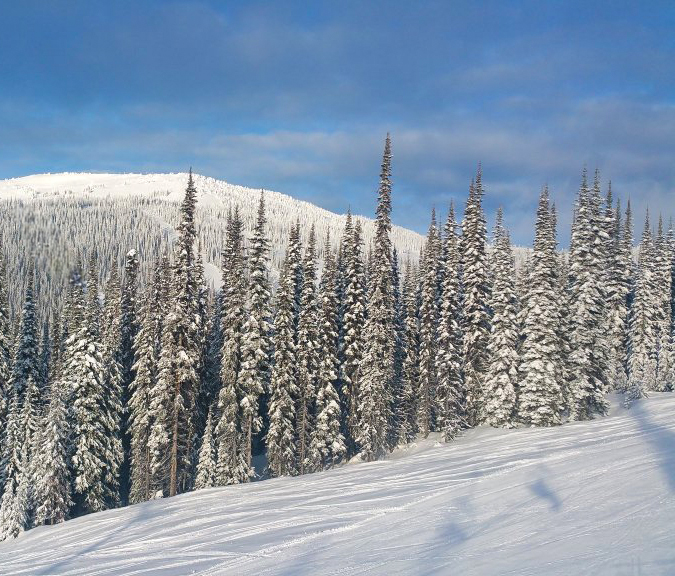 Many forests are losing their winter snowpack as global temperatures rise, and that could substantially slow their growth – and reduce the amount of carbon they remove from the atmosphere. Current projections “are not incorporating that complexity of winter climate change, so they are likely overestimating what the future carbon storage will be”, says
Many forests are losing their winter snowpack as global temperatures rise, and that could substantially slow their growth – and reduce the amount of carbon they remove from the atmosphere. Current projections “are not incorporating that complexity of winter climate change, so they are likely overestimating what the future carbon storage will be”, says 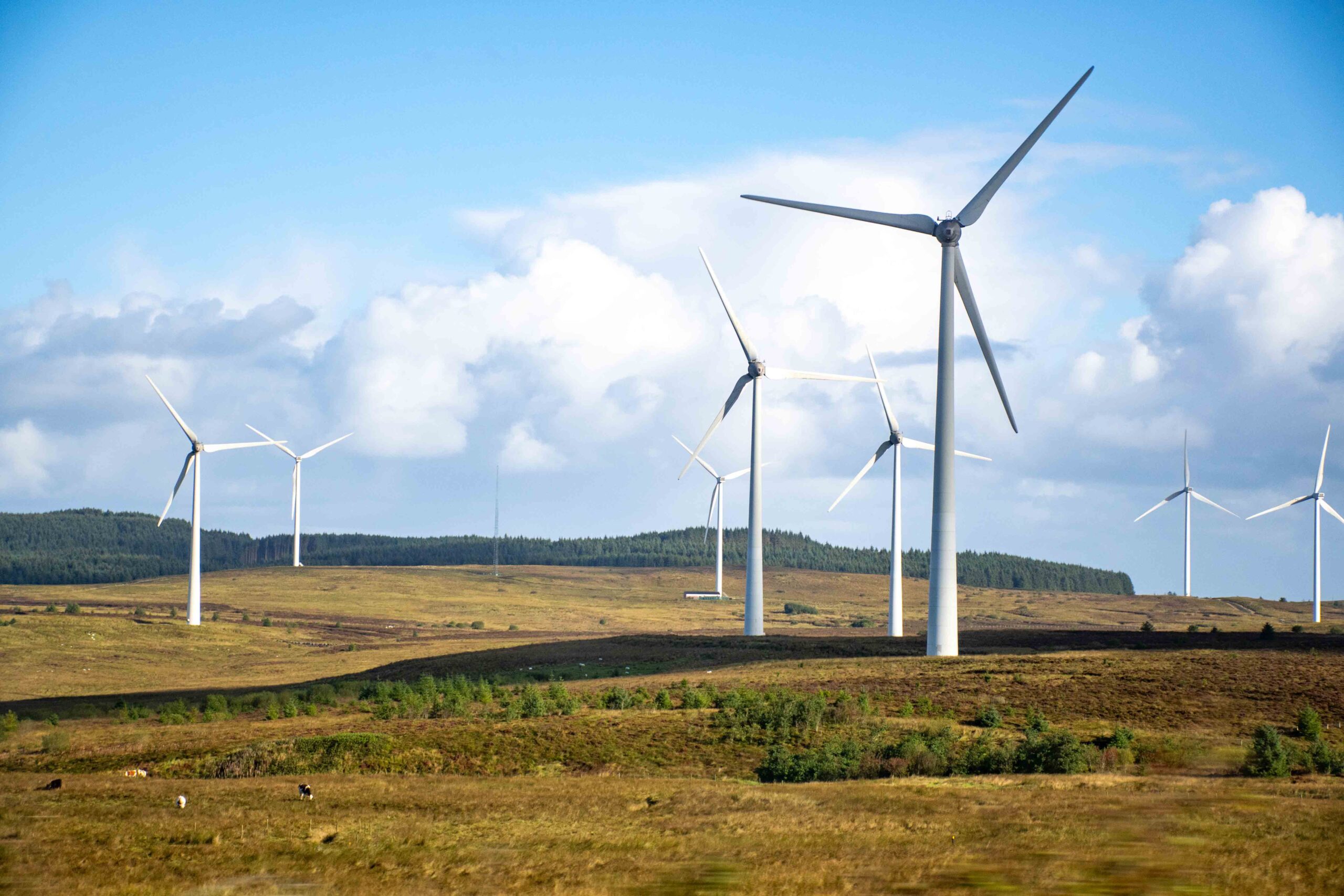 The Trump administration on Monday shut down a federal website that had presented congressionally mandated reports and research on climate change, drawing rebukes from scientists who said it will hinder the nation’s efforts to prepare for worsening droughts, floods and heat waves. The U.S. Global Change Research Program’s website, globalchange.gov, was taken down along with all five versions of the National Climate Assessment report and extensive information on how global warming is affecting the country. “They’re public documents. It’s scientific censorship at its worst,” said Peter Gleick, a California water and climate scientist. …In May, Trump signed an executive order saying that his administration is committed to “restoring a gold standard for science to ensure that federally funded research is transparent, rigorous.” …The president cited an example relating to climate science, saying federal agencies previously used a “worst-case scenario” of warming “based on highly unlikely assumptions.”
The Trump administration on Monday shut down a federal website that had presented congressionally mandated reports and research on climate change, drawing rebukes from scientists who said it will hinder the nation’s efforts to prepare for worsening droughts, floods and heat waves. The U.S. Global Change Research Program’s website, globalchange.gov, was taken down along with all five versions of the National Climate Assessment report and extensive information on how global warming is affecting the country. “They’re public documents. It’s scientific censorship at its worst,” said Peter Gleick, a California water and climate scientist. …In May, Trump signed an executive order saying that his administration is committed to “restoring a gold standard for science to ensure that federally funded research is transparent, rigorous.” …The president cited an example relating to climate science, saying federal agencies previously used a “worst-case scenario” of warming “based on highly unlikely assumptions.”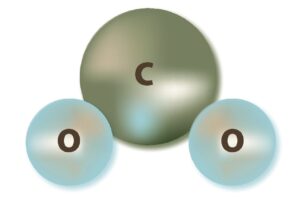 Power plants and industrial facilities that emit carbon dioxide are hopeful that Congress will keep tax credits for capturing the gas and storing it deep underground. The process, called carbon capture and sequestration, is seen by many as an important way to reduce pollution during a transition to renewable energy. But it faces criticism from some conservatives, who say it is expensive and unnecessary, and from environmentalists, who say it has consistently failed to capture as much pollution. …The most commonly used technology allows facilities to capture and store around 60% of their CO2 emissions during the production process. Anything above that rate is much more difficult and expensive, according to the IEA. …Even so, carbon capture is an important tool to reduce CO2 emissions, particularly in heavy industries, said Sangeet Nepal at the Carbon Capture Coalition. “It’s not a substitution for renewables … it’s just a complementary technology”.
Power plants and industrial facilities that emit carbon dioxide are hopeful that Congress will keep tax credits for capturing the gas and storing it deep underground. The process, called carbon capture and sequestration, is seen by many as an important way to reduce pollution during a transition to renewable energy. But it faces criticism from some conservatives, who say it is expensive and unnecessary, and from environmentalists, who say it has consistently failed to capture as much pollution. …The most commonly used technology allows facilities to capture and store around 60% of their CO2 emissions during the production process. Anything above that rate is much more difficult and expensive, according to the IEA. …Even so, carbon capture is an important tool to reduce CO2 emissions, particularly in heavy industries, said Sangeet Nepal at the Carbon Capture Coalition. “It’s not a substitution for renewables … it’s just a complementary technology”. 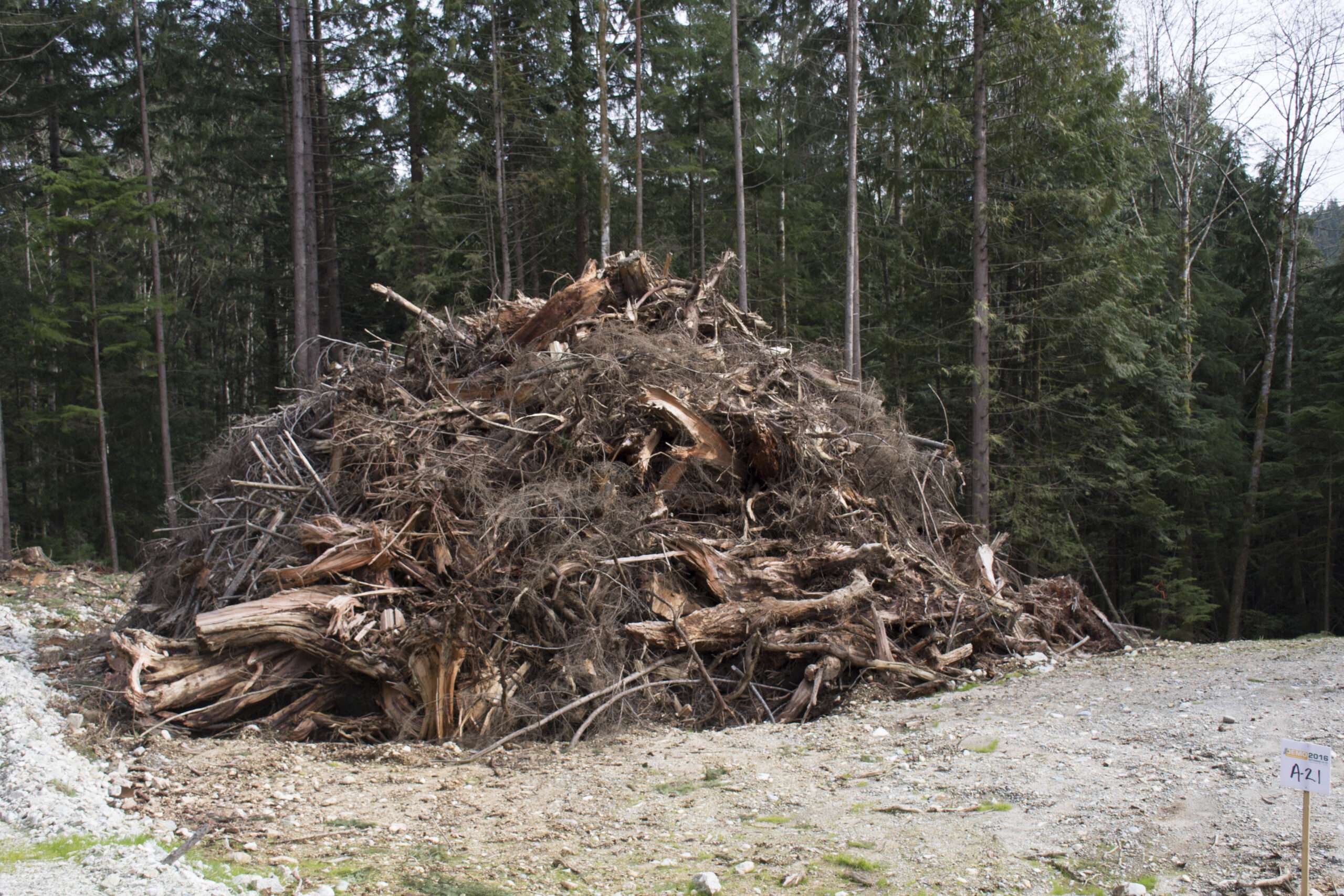 The world’s sawmills and plantation forests offer a powerful weapon against climate change, a new study has found. A paper published in Nature Geosciences found that burying the vast quantities of wood waste produced in the course of logging and processing trees could markedly slow Earth’s heating. Heat waves like the one currently afflicting the East Coast in the U.S. have been made far more likely by centuries of unchecked burning of fossil fuels — which release heat-trapping chemicals like carbon dioxide. …But in addition to the need to halt that burning, researchers found that burying waste from trees … offers an unparalleled way to counteract its impacts. …the study burying waste could reduce the Earth’s heating by 0.42 degrees Celsius, or about one-sixth of the estimated 3 degrees Celsius that scientists believe the Earth is on track to heat up by the end of the century.
The world’s sawmills and plantation forests offer a powerful weapon against climate change, a new study has found. A paper published in Nature Geosciences found that burying the vast quantities of wood waste produced in the course of logging and processing trees could markedly slow Earth’s heating. Heat waves like the one currently afflicting the East Coast in the U.S. have been made far more likely by centuries of unchecked burning of fossil fuels — which release heat-trapping chemicals like carbon dioxide. …But in addition to the need to halt that burning, researchers found that burying waste from trees … offers an unparalleled way to counteract its impacts. …the study burying waste could reduce the Earth’s heating by 0.42 degrees Celsius, or about one-sixth of the estimated 3 degrees Celsius that scientists believe the Earth is on track to heat up by the end of the century.
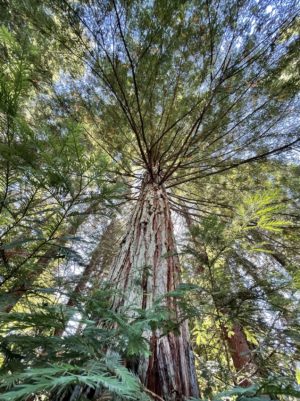 On May 23, 2025, Maine’s Governor Janet Mills signed into law “An Act to Require Landowners to Report Their Participation in a Forest Carbon Program or Project”. The new law requires landowners enrolled in forest carbon credit programs or projects to report, on an annual basis, basic data on their participation in such programs to the state of Maine. …The purpose of the reporting requirement is to provide the state with visibility into the emerging carbon credit market and the amount of land in Maine enrolled in such programs. …However, a potential challenge arises if these credits are sold in external markets to offset emissions elsewhere. Maine’s robust forest products industry also has an interest in understanding how carbon credit project enrollment may impact the overall amount of land available for harvest.
On May 23, 2025, Maine’s Governor Janet Mills signed into law “An Act to Require Landowners to Report Their Participation in a Forest Carbon Program or Project”. The new law requires landowners enrolled in forest carbon credit programs or projects to report, on an annual basis, basic data on their participation in such programs to the state of Maine. …The purpose of the reporting requirement is to provide the state with visibility into the emerging carbon credit market and the amount of land in Maine enrolled in such programs. …However, a potential challenge arises if these credits are sold in external markets to offset emissions elsewhere. Maine’s robust forest products industry also has an interest in understanding how carbon credit project enrollment may impact the overall amount of land available for harvest.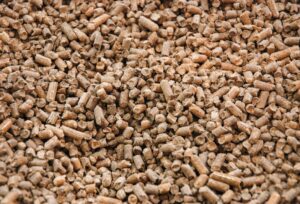 After Georgetown’s International Paper mill shut down at the end of last year, the pressure is on for South Carolina’s forestry industry to find new local markets. The solution may be as simple as burning wood, a type of renewable energy. …South Carolina produces wood pellets but much of the product is shipped abroad. …Some lawmakers hope wood biomass specifically could address two problems the state faces: the forestry industry’s need for new local markets and consumers’ demand for more energy. State lawmakers attempted to address the latter in the South Carolina Energy Security Act. The new law is aimed at generating more energy in the state. …Forestry industry leaders delivered
After Georgetown’s International Paper mill shut down at the end of last year, the pressure is on for South Carolina’s forestry industry to find new local markets. The solution may be as simple as burning wood, a type of renewable energy. …South Carolina produces wood pellets but much of the product is shipped abroad. …Some lawmakers hope wood biomass specifically could address two problems the state faces: the forestry industry’s need for new local markets and consumers’ demand for more energy. State lawmakers attempted to address the latter in the South Carolina Energy Security Act. The new law is aimed at generating more energy in the state. …Forestry industry leaders delivered 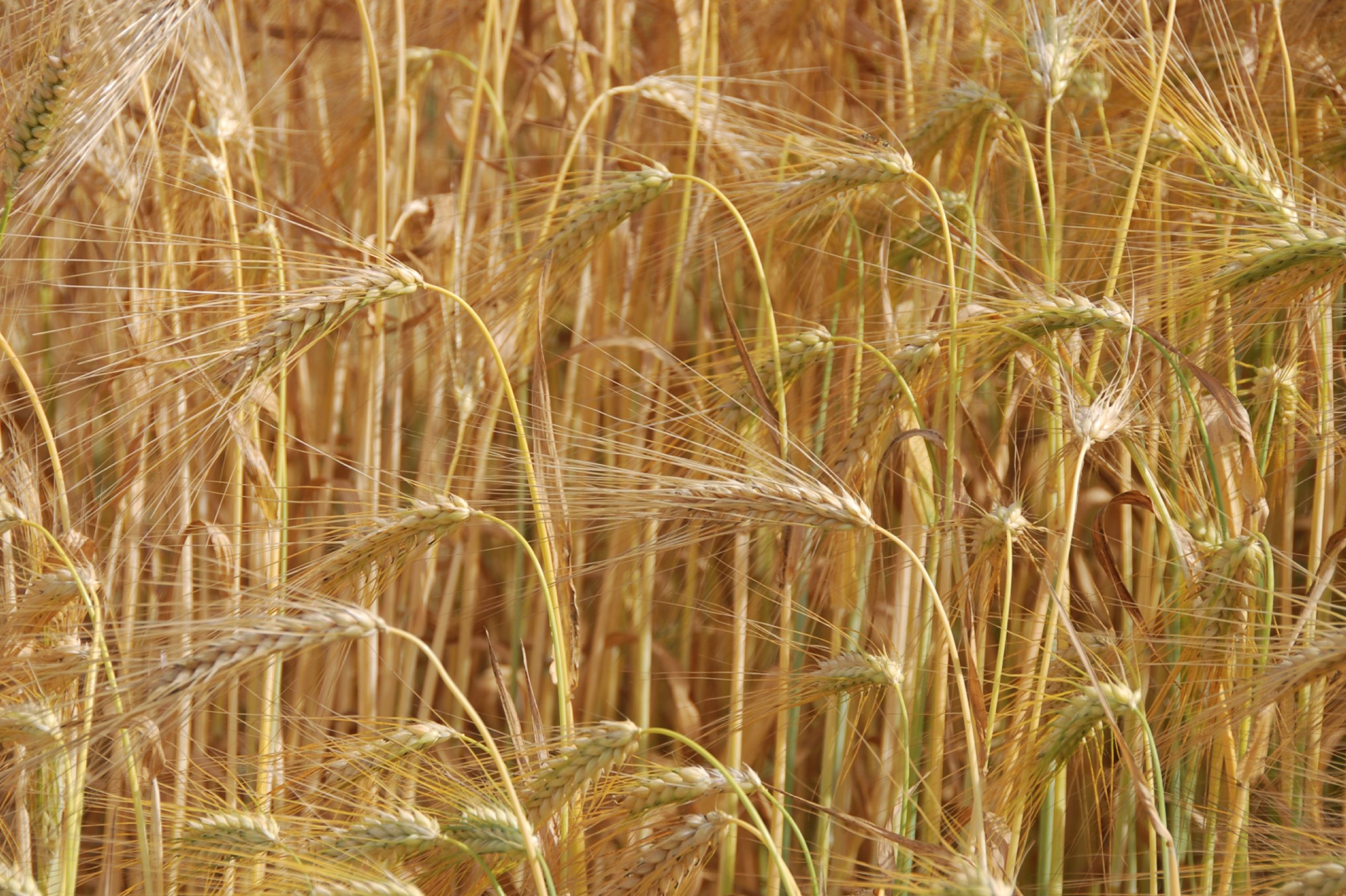 A Norwegian start up is showing how a little black powder could have a big impact on farming — from healthier livestock to stronger soils and a more climate-friendly future. Why it matters: The ongoing emphasis on reducing antibiotic use in livestock production and increasing soil health means farmers are looking for new tools to help them achieve this. Obiochar, based in rural Norway about 120 kilometres north of Oslo, is using a fully automated system to turn biomass – in this case dead trees from nearby forests that can’t be used by the lumber industry – into a powerful tool for agriculture. And while biochar itself isn’t new, Obiochar ‘s unique, dual-focused approach to using biochar is setting it apart from its competitors. The company is developing biochar products both for livestock gut health in the form of feed additives and soil enhancement as an amendment.
A Norwegian start up is showing how a little black powder could have a big impact on farming — from healthier livestock to stronger soils and a more climate-friendly future. Why it matters: The ongoing emphasis on reducing antibiotic use in livestock production and increasing soil health means farmers are looking for new tools to help them achieve this. Obiochar, based in rural Norway about 120 kilometres north of Oslo, is using a fully automated system to turn biomass – in this case dead trees from nearby forests that can’t be used by the lumber industry – into a powerful tool for agriculture. And while biochar itself isn’t new, Obiochar ‘s unique, dual-focused approach to using biochar is setting it apart from its competitors. The company is developing biochar products both for livestock gut health in the form of feed additives and soil enhancement as an amendment. Companies around the world have poured hundreds of millions of dollars into conservation projects in Brazil designed to protect the Amazon rainforest in return for carbon credits offsetting their emissions. Reuters found that many of those projects are profiting people and businesses fined by Brazilian authorities for destroying the rainforest. Reporters analyzed 36 conservation projects in the Brazilian Amazon offering voluntary carbon offsets on the global market’s biggest registries. At least 24 of those involved landowners, developers or forestry firms that have been punished by Brazil’s environmental agency Ibama for their roles in illegal deforestation, Reuters found. The offenses ranged from clear-cutting the rainforest without authorization to transporting felled trees without valid permits and entering false information in a government timber tracking system. Government officials and experts said these infractions reflected the range of roles in the illicit timber trade devouring the rainforest.
Companies around the world have poured hundreds of millions of dollars into conservation projects in Brazil designed to protect the Amazon rainforest in return for carbon credits offsetting their emissions. Reuters found that many of those projects are profiting people and businesses fined by Brazilian authorities for destroying the rainforest. Reporters analyzed 36 conservation projects in the Brazilian Amazon offering voluntary carbon offsets on the global market’s biggest registries. At least 24 of those involved landowners, developers or forestry firms that have been punished by Brazil’s environmental agency Ibama for their roles in illegal deforestation, Reuters found. The offenses ranged from clear-cutting the rainforest without authorization to transporting felled trees without valid permits and entering false information in a government timber tracking system. Government officials and experts said these infractions reflected the range of roles in the illicit timber trade devouring the rainforest.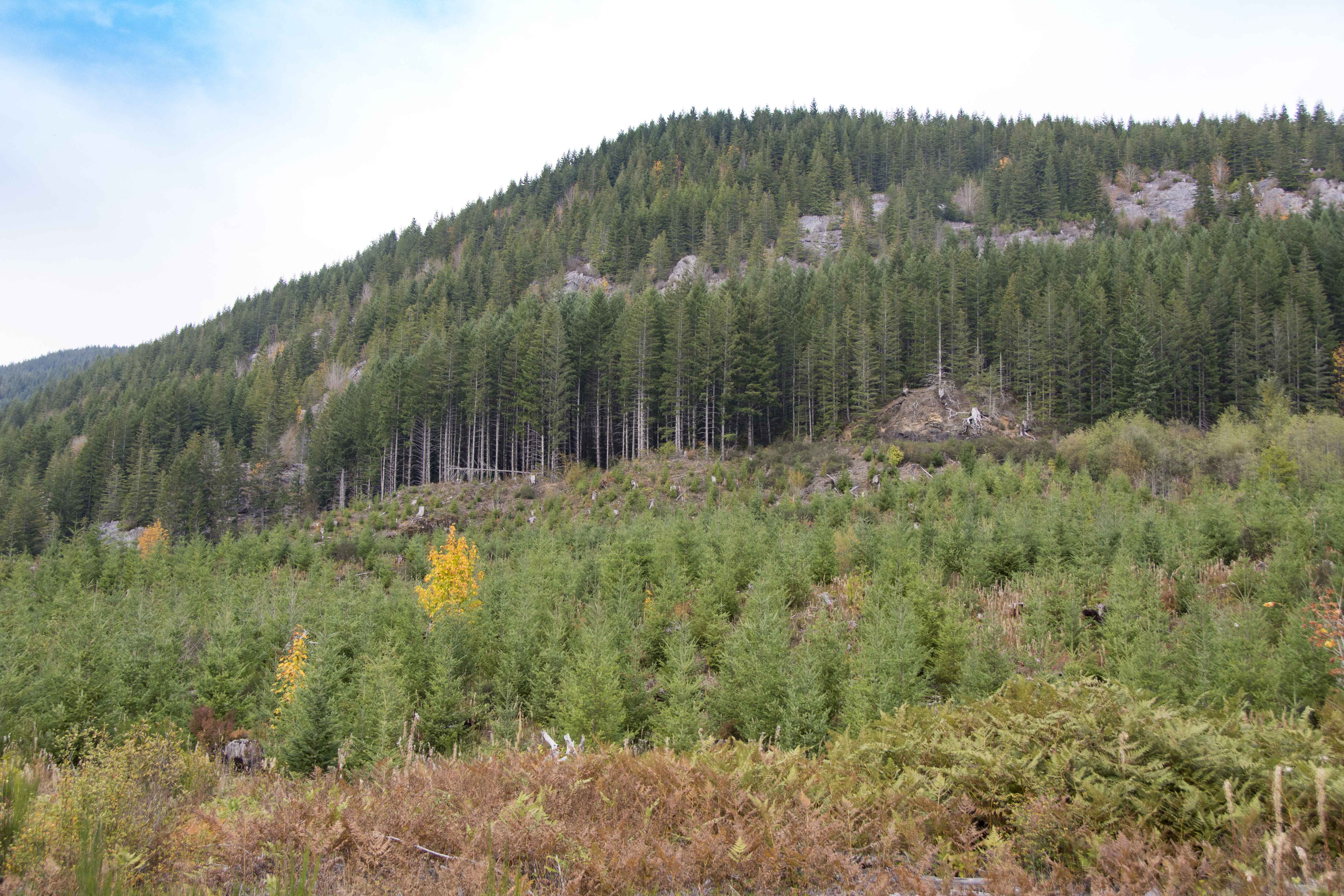 Young forests regrowing from land where mature woodlands have been cut down have a key role to play in removing billions of tons of atmospheric carbon dioxide (CO2) and combating climate change, a new study reveals. …Forest regeneration offers a cost-effective method for carbon removal, but rates vary by location and forest age. Researchers have discovered that young secondary forests, particularly those aged between 20 and 40 years, exhibit the highest rates of carbon removal—locking away up to eight times more carbon per hectare than newly regenerating forests. …Their study reveals that if 800 million hectares of restorable forest begin regenerating in 2025, up to 20.3 billion metric tons of carbon could be removed by 2050, but delays sharply reduce this potential.
Young forests regrowing from land where mature woodlands have been cut down have a key role to play in removing billions of tons of atmospheric carbon dioxide (CO2) and combating climate change, a new study reveals. …Forest regeneration offers a cost-effective method for carbon removal, but rates vary by location and forest age. Researchers have discovered that young secondary forests, particularly those aged between 20 and 40 years, exhibit the highest rates of carbon removal—locking away up to eight times more carbon per hectare than newly regenerating forests. …Their study reveals that if 800 million hectares of restorable forest begin regenerating in 2025, up to 20.3 billion metric tons of carbon could be removed by 2050, but delays sharply reduce this potential. The European Commission on Wednesday proposed an EU climate target for 2040 that for the first time will allow countries to use carbon credits from developing nations to meet a limited share of their emissions goal. The European Union executive proposed a legally-binding target to cut net greenhouse gas emissions by 90% by 2040, from 1990 levels – aiming to keep the EU on course for its core climate aim to reach net zero emissions by 2050. But following pushback from governments including France, Germany, Italy, Poland and the Czech Republic, the Commission also proposed flexibilities that would soften the 90% emissions target for European industries. Reflecting Germany’s public stance, up to 3 percentage points of the 2040 target can be covered by carbon credits bought from other countries through a U.N.-backed market, reducing the effort required by domestic industries.
The European Commission on Wednesday proposed an EU climate target for 2040 that for the first time will allow countries to use carbon credits from developing nations to meet a limited share of their emissions goal. The European Union executive proposed a legally-binding target to cut net greenhouse gas emissions by 90% by 2040, from 1990 levels – aiming to keep the EU on course for its core climate aim to reach net zero emissions by 2050. But following pushback from governments including France, Germany, Italy, Poland and the Czech Republic, the Commission also proposed flexibilities that would soften the 90% emissions target for European industries. Reflecting Germany’s public stance, up to 3 percentage points of the 2040 target can be covered by carbon credits bought from other countries through a U.N.-backed market, reducing the effort required by domestic industries.  In an update to the joint UNESCO-WRI-IUCN report
In an update to the joint UNESCO-WRI-IUCN report 
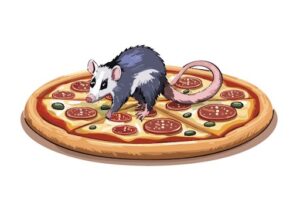 When Domino’s advertised its “smokehouse” pizzas in 2023, it trumpeted that the meat was smoked over timber logged from “Aussie Mountain ash”. It also advertised that the timber was certified as sustainable. But what the advertising didn’t promote was that mountain ash forests are critically endangered, with logging listed as one of the key processes threatening them. And now the ABC can reveal the certification that assured consumers that logging was sustainable was breached in seven different ways, according to the organisation that accredits certifiers. Those breaches included potentially stealing the trees from the neighbouring state forest, ignoring protections for waterways and logging potential endangered species habitat. “I think Australians should be absolutely appalled that the world’s tallest flowering tree is chipped up to make woodchips to smoke pork bellies to put on pizzas. It’s ridiculous. What are we talking about? Endangered possum pizzas?” Professor Lindenmayer said.
When Domino’s advertised its “smokehouse” pizzas in 2023, it trumpeted that the meat was smoked over timber logged from “Aussie Mountain ash”. It also advertised that the timber was certified as sustainable. But what the advertising didn’t promote was that mountain ash forests are critically endangered, with logging listed as one of the key processes threatening them. And now the ABC can reveal the certification that assured consumers that logging was sustainable was breached in seven different ways, according to the organisation that accredits certifiers. Those breaches included potentially stealing the trees from the neighbouring state forest, ignoring protections for waterways and logging potential endangered species habitat. “I think Australians should be absolutely appalled that the world’s tallest flowering tree is chipped up to make woodchips to smoke pork bellies to put on pizzas. It’s ridiculous. What are we talking about? Endangered possum pizzas?” Professor Lindenmayer said.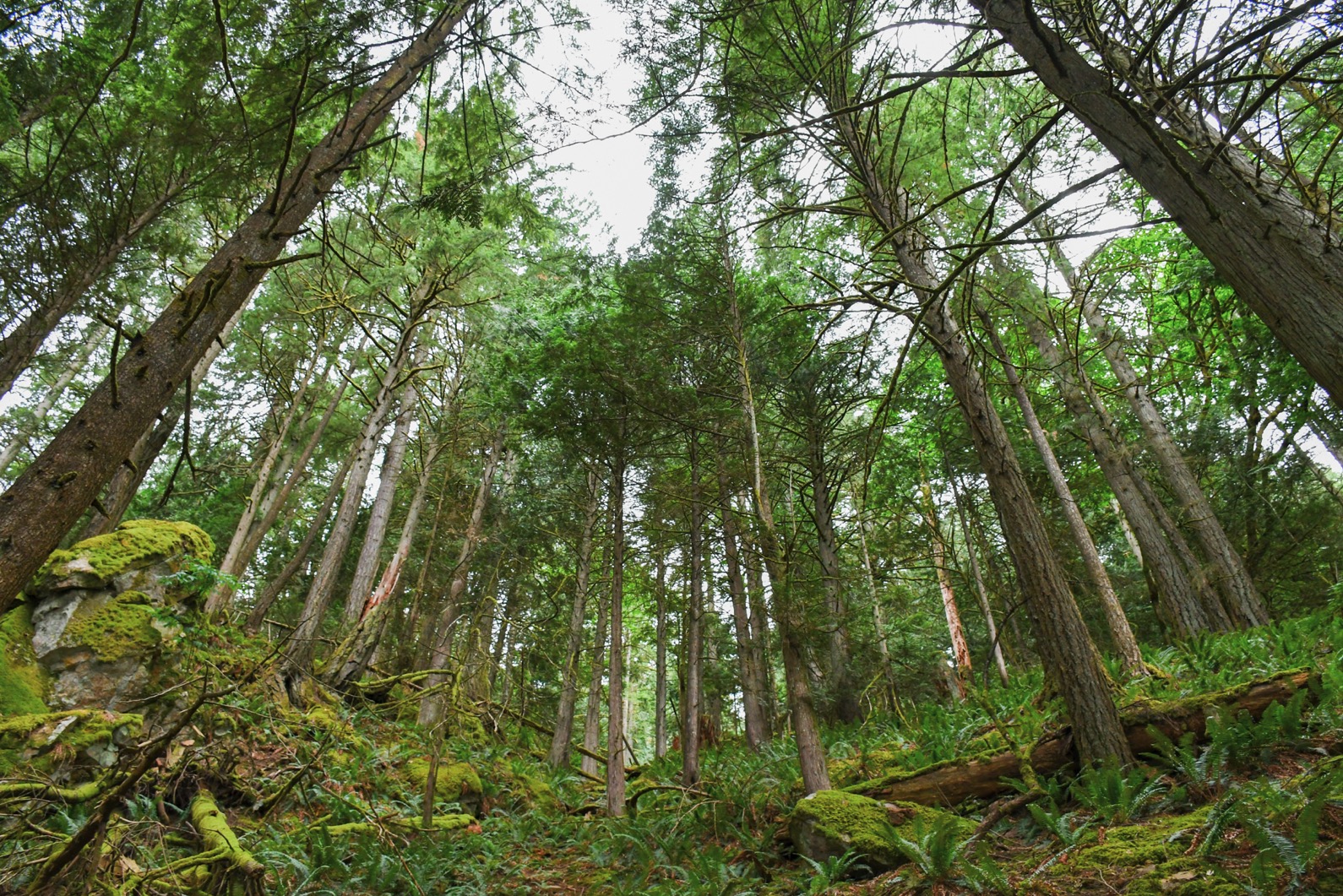 Naturally-regenerating forests are often ignored by policymakers working to curb climate change even though they hold an untapped potential to rapidly absorb planet-warming carbon from the atmosphere, scientists found in a research paper published Tuesday. These so-called secondary forests, which have regenerated themselves after being razed, often for agriculture, can help bring the world closer to the net-zero emissions target needed to slow global warming, the research published in the journal shows. That is because these young forests, which are made of trees between two and four decades old, can remove carbon from the atmosphere up to eight times faster per hectare than forests that were just planted, they found. It comes as companies worldwide are raising millions of dollars to regrow forests from scratch to generate carbon credits they can sell to polluting industries seeking to offset their greenhouse gas emissions.
Naturally-regenerating forests are often ignored by policymakers working to curb climate change even though they hold an untapped potential to rapidly absorb planet-warming carbon from the atmosphere, scientists found in a research paper published Tuesday. These so-called secondary forests, which have regenerated themselves after being razed, often for agriculture, can help bring the world closer to the net-zero emissions target needed to slow global warming, the research published in the journal shows. That is because these young forests, which are made of trees between two and four decades old, can remove carbon from the atmosphere up to eight times faster per hectare than forests that were just planted, they found. It comes as companies worldwide are raising millions of dollars to regrow forests from scratch to generate carbon credits they can sell to polluting industries seeking to offset their greenhouse gas emissions.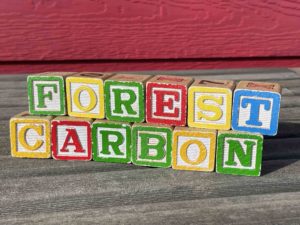
 Judges across the world are proving sceptical of companies’ attempts to offset their greenhouse gas emissions by buying carbon credits,
Judges across the world are proving sceptical of companies’ attempts to offset their greenhouse gas emissions by buying carbon credits,  Protecting and restoring forests are essential for curbing climate change. But while efforts often focus on conserving mature forests and planting new trees (both of which are badly needed), a critical piece of the puzzle is often overlooked: managing naturally regrowing forests to increase the carbon they remove. Until now, scientists did not have a detailed picture of the carbon removal value of naturally regrowing forests. But
Protecting and restoring forests are essential for curbing climate change. But while efforts often focus on conserving mature forests and planting new trees (both of which are badly needed), a critical piece of the puzzle is often overlooked: managing naturally regrowing forests to increase the carbon they remove. Until now, scientists did not have a detailed picture of the carbon removal value of naturally regrowing forests. But